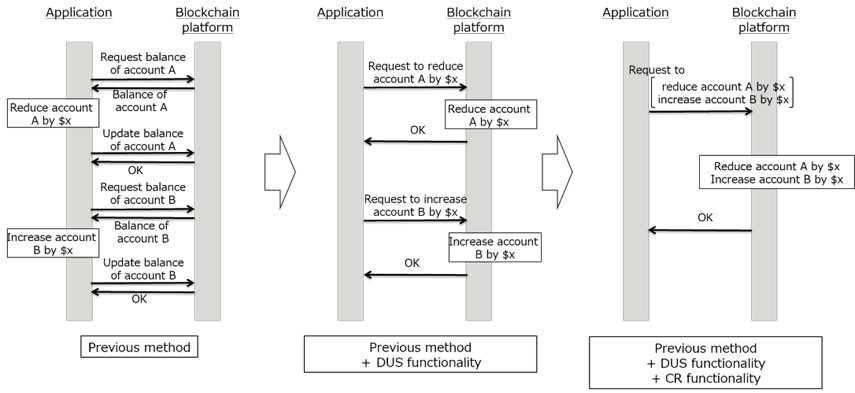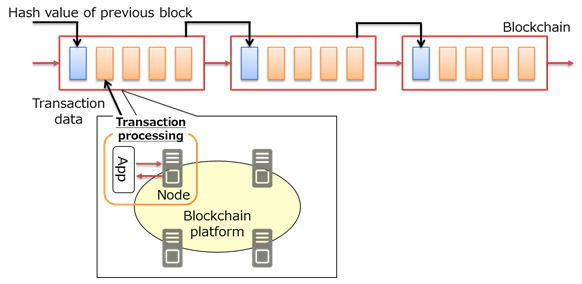Fujitsu in blockchain-powered payments breakthrough
Fujitsu Laboratories says it has accelerated transaction processing for Hyperledger Fabric, one of the Hyperledger blockchain frameworks hosted by the Linux Foundation.
In its latest development, Fujitsu says the processing of communications between applications and the blockchain platform, which had been the source of bottlenecks, is now “more efficient”.
In a trial where this technology was implemented in Hyperledger Fabric v0.6.1(1), it increased transaction performance by approximately 2.7 times compared to the previous method. According to Fujitsu, the previous method could handle 500 transactions per second, but it achieved 1,350 transactions per second. A result which means it is “now possible to apply blockchain to online transaction systems”.
Fujitsu explains that with blockchain, groups of nodes based on the number of participants form a network, and work together through the network to perform a series of processes from executing transactions to validating the legitimacy of transactions.
For this reason, the number of transactions that can be executed per unit of time is limited by communication bottlenecks through the network, compared to previous centralised systems, making it difficult to apply the technology to things like online transaction systems, which demand such things as the ability to immediately process large volumes of transactions.
Using its proprietary analysis technology, Fujitsu says it learned that, under network conditions in which a response time of about 64 milliseconds or less is required, such as the case where a consortium-type blockchain (i.e. Hyperledger Fabric) is operated at multiple locations within Japan, communications between the applications and the blockchain platform during transaction processing are the primary cause of bottlenecks.
Now, based on these analysis results, Fujitsu has developed two technologies to improve transaction performance speed:
- Differential update state (DUS) functionality: Executes only differential computations on the specified data, in one processing action on the platform, and functionality that reduces the number of computations directly linked with the number of communications;
- Compound request (CR) functionality: Makes processing on platform more efficient by aggregating multiple processes and reduces the number of communications. The functionality maintains accuracy by rewinding to the origin point of the batch execution if a partial error occurs in the aggregated processes, and reprocessing.

Figure 2: Example showing the reduced number of communications due to the DUS functionality and the CR functionality
Fujitsu plans to continue development of technologies to “further speed up” the blockchain while adapting them to the latest version of Hyperledger Fabric, and will carry out trials with a view to commercial applications. It also plans to commercialise it during fiscal 2017.












































